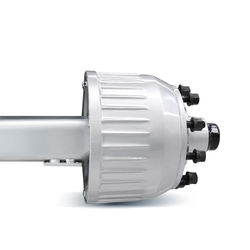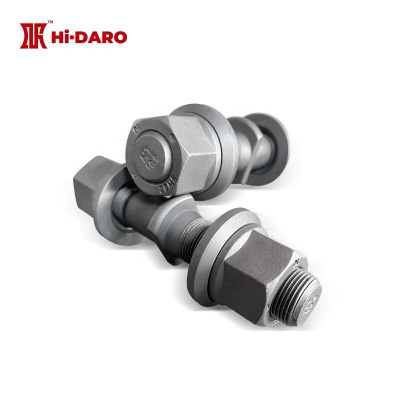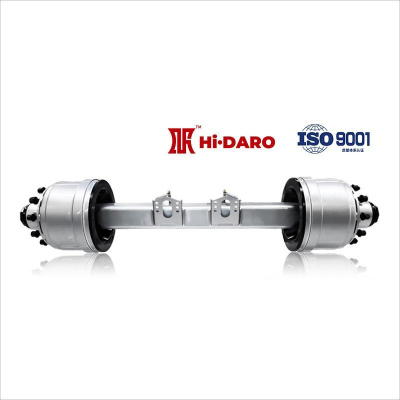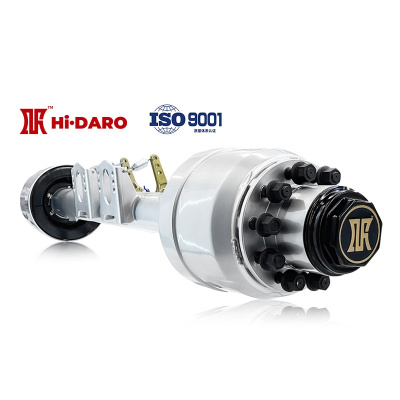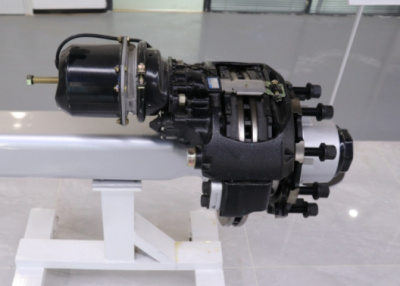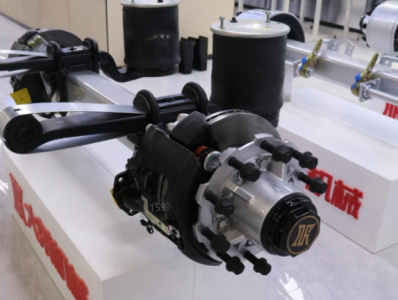What should I do if the trailer tires are abnormally worn?
Trailer "tire eating" is a popular term for abnormal tire wear. As the only part of the vehicle that is directly in contact with the road, tires need to bear various deformations, loads, forces, and high and low temperature effects under high-speed, heavy load, rain, snow, sand and gravel conditions. According to relevant surveys, almost half of the tires Both trailers have had problems with abnormal tire wear.

The phenomenon of "eating tires" on the trailer may be closely related to many factors, such as the design of the trailer frame, the installation of the suspension, the design of the axle, and the quality of the tire itself. Minimize or avoid the phenomenon of "tire eating" in the trailer as much as possible:
1. Frequently check whether the U-shaped bolts are fastened in place and whether the maintenance of the pull rods is reasonable, especially after the first purchase of new hangers, you must check the U-shaped bolts and pull rods;
2. Inflate the tires strictly according to the required air pressure standards. Too high or too low tire pressure will cause abnormal wear. When the tire pressure is too high, it will easily cause the middle part of the tire surface to wear, and when the tire pressure is too low, the tire edge will wear abnormally;
3. Do a good job in the daily maintenance of tires, and regularly rotate tires, which can make tires wear more evenly and prolong their service life;
4. Ensure that the installation of chassis mechanisms such as leaf springs does not appear misplaced, otherwise the vehicle is prone to adverse vibrations during driving, and it will also cause abnormal wear of the tires;
5. Pay attention to check the fastening of the wheel hub screws. The wheel hub bearings are loose, the leaf spring saddle bolts are not tightened according to the regulations, and the suspension is loose, which will cause the tires to swing during driving and cause abnormal wear;
6. Do a good job in the maintenance of the vehicle braking system to ensure the normal performance of the braking system. If the air path is not smooth, the brakes are lagging, and the ABS is not calibrated, etc., it will also cause abnormal wear of the tires;
7. Don’t overload the tires. There is no need to repeat the damage caused by overloading the tires. Whether it is for driving safety or to reduce the phenomenon of tires “eating tires”, do not overload them;
8. Pay attention to the balanced force of the tires when loading, especially when retail car owners carry out multiple distributions, pay attention to the rationality of loading;
9. The driver's bad driving habits are also one of the main reasons for abnormal tire wear, such as frequent emergency braking, sharp turns, etc., will also cause abnormal tire wear.

How to identify the possible reasons after the phenomenon of "tire eating" in the trailer? Next, the DARO trailer axle summarizes several common "tire-eating" performances of trailers and their corresponding reasons for your reference. Of course, the reason why the trailer "eats tires" is more complicated. In many cases, it may not be caused by a single factor, and may not be included in the following factors. If the owner feels that he cannot solve it by himself, it is best to send it to a repair shop.
1. The shoulders on both sides of the tread are abnormally worn.
Solution: Check whether the tire pressure is too low and whether there is a problem with the tire quality.
2. The center of the tread is abnormally worn.
Solution: Check whether the tire pressure is too high, or whether there is a problem with the quality of the tire.
3. The steering axle tread is worn in an "S" shape.
Solution: Check whether there is a problem with the fixation of the toe-in, steel ring, steering ball head, and steering machine.
4. The tread of the rear axle shows "S" type wear.
Solution: Check whether the steel ring, wheel hub, and axle head bolts are loose.
5. Fixed an abnormal wear on the tread.
Solution: Check whether the brake hub is out of round.
6. The inner sides of the two tires on the same axis are abnormally worn.
Solution: Check whether there is a problem with the toe-in and steering knuckle kingpin.
7. The outer sides of the two tires on the same axis are abnormally worn.
Solution: Check toe-in size for problems.
8. The inner side of the tire on one side of the steering axle is abnormally worn.
Solution: Check the steering knuckle kingpin.
9. The outer side of the tire on one side of the steering axle is abnormally worn.
Solution: Check whether the front axle and steering knuckle kingpin are deformed.
10. The inner side of the tire on one side of the rear axle is abnormally worn.
Solution: Check whether the hub bearing clearance is too large, whether the hub and the bearing shell are loose, and whether the half shaft guide is deformed and bent upwards.
11. The outer side of the tire on one side of the rear axle is abnormally worn.
Solution: Check whether the steel plate center screw, steel plate pin bushing, and steel plate lifting lug are loose.
12. The outer side of the tire on one side of the rear axle and the inner side of the tire on the other side are abnormally worn.
Solution: Check whether the steel plate center screw, steel plate pin bushing, and steel plate lifting lug are loose.
13. The inner side of a single tire on the steering axle is abnormally worn.
Solution: Check whether the kingpin of the tire-eating bridge steering knuckle, the hub bearing and the ball joint are loose, and whether the toe-in is too large.
14. The outer side of a single tire on the steering axle is abnormally worn.
Solution: Check whether the toe-in of the tire-eating bridge is too small, whether the kingpin of the steering knuckle and the axle are deformed.
15. The inner side and the outer side of the coaxial tires on the steering axle of the double front axle vehicle are abnormally worn.
Solution: Check the steering synchronization and the axle suspension positioning.
16. The outer sides of the tires on the two axles of the double front axle vehicle are abnormally worn.
Solution: Check the steering knuckle kingpin.
17. The inner sides of the tires on the two axles of the double front axle vehicle are abnormally worn.
Solution: Check whether the front axle and steering knuckle kingpin are deformed.
